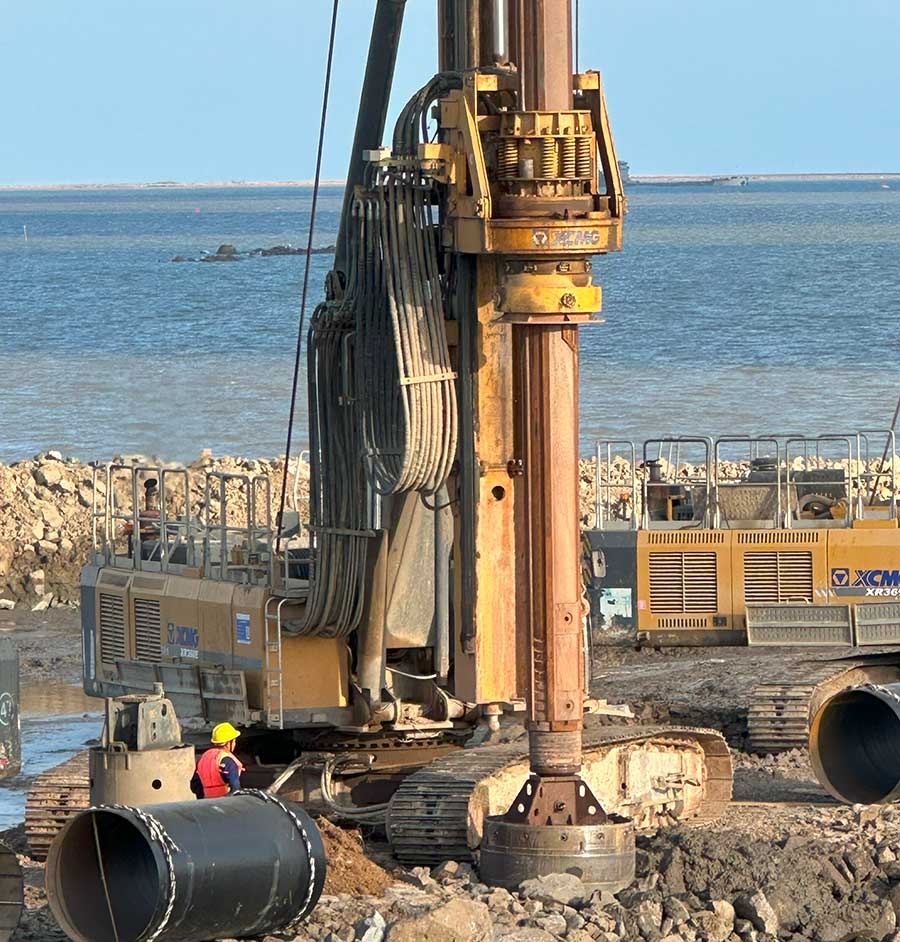What is piling in construction?
Piling is a critical technique in construction that provides strong and stable foundations, especially for structures built on soft or unstable soil. A pile foundation transfers the load of the building deep into the ground, reaching layers with better bearing capacity. This ensures the safety and durability of high-rise buildings, bridges, and industrial structures.One common method used in modern piling is bor pile (bored pile) construction. This involves drilling a deep hole into the ground, inserting a pile casing to maintain the borehole’s shape, and then pouring reinforced concrete. The pile casing is essential in preventing soil collapse during drilling, especially in loose or water-bearing soil layers.Casing construction is often used when dealing with complex ground conditions. It allows for precise placement of the pile and minimizes disruption to the surrounding soil. Once the concrete is set, the casing may be left in place or removed, depending on the project’s requirements.

What is casing and why is it used?
Casing is used to support the borehole wall during piling or drilling. It plays a vital role in casing construction, especially when working in soft, loose or water-laden soils where there is a risk of the borehole wall collapsing.
Why Is Casing Used?
- To Stabilize the Borehole
During bor pile drilling, the surrounding soil can cave in, especially in unstable ground conditions. A pile casing prevents this by keeping the borehole intact throughout the drilling and concreting process.
In areas with a high water table, casing helps block groundwater from flooding the borehole, which ensures cleaner concrete placement and better pile quality.
- To Guide Reinforcement and Concrete Placement
Casing provides a clear path for inserting reinforcement cages and pouring concrete, which improves the accuracy and integrity of the pile foundation.
- To Ensure Safety and Quality
Using casing reduces the risk of borehole failure, saving time and costs associated with re-drilling and ensuring a more durable final structure.
What are the types of piling casing?
Piling casings is used to support the borehole wall during drilling and concrete pouring. They prevent soil collapse and water inflow, especially in unstable ground conditions. There are several types of casing used in piling, based on function, design, and installation method.
1. Temporary Casing
Used only during drilling and concrete pouring.
Removed after the pile is completed.
Common in rotary bored piling.
Advantage: Reusable, cost-effective for multiple uses.
2. Permanent Casing
Left in the ground as part of the pile structure.
Used when soil or groundwater conditions require permanent support.
Often seen in marine or aggressive soil environments.
Advantage: Provides long-term protection against corrosion and soil movement.
3. Segmental Casing
Made of shorter sections (segments) bolted or threaded together.
Easier to handle and transport.
Ideal for deep piles where single-length casings are impractical.
Advantage: Flexible assembly and disassembly on-site.
The choice of casing depends on pile depth, soil conditions, water table level, and whether the casing needs to stay in place. Whether you’re using temporary rotary casings or heavy-duty segmental casings, selecting the right type ensures safer, more efficient foundation construction.

Piling Casing Installation Methods
Piling casing plays a crucial role in supporting boreholes during foundation drilling. Proper installation is essential to ensure safety, stability, and structural integrity. Here are the most common methods of installing piling casing on construction sites:
1. Vibratory Driving
This method uses a vibratory hammer to insert the casing into the ground. It’s fast and effective, especially in loose or sandy soils.
Advantages: High speed, less noise than impact hammers
Best for: Temporary casings in soft ground conditions
2. Rotary Drilling with Casing Oscillator or Rotator
In hard or mixed soil layers, casings are installed using a casing oscillator or rotator, which rotates the casing into the ground.
Advantages: Suitable for large-diameter, deep piles
Best for: Urban areas, hard strata, or underwater construction
3. Impact Driving (Hammering)
Steel casings can be driven into the ground using a diesel or hydraulic impact hammer. This method is powerful but causes more vibration.
Advantages: Effective in dense soils
Disadvantages: Noisy, high vibration
4. Jack-In Method
Casings are pushed into the ground using hydraulic jacks. This method creates minimal vibration and is ideal for noise-sensitive areas.
Advantages: Low noise and vibration
Best for: Urban or near-structure projects
